Within the National Museums Scotland costume collection are various beautiful beaded dresses from the 1920s. The beaded dress pictured is one that recently came into the Paper and Textile Conservation studio to be prepared for display in the forthcoming Fashion and Style gallery, opening in 2016.
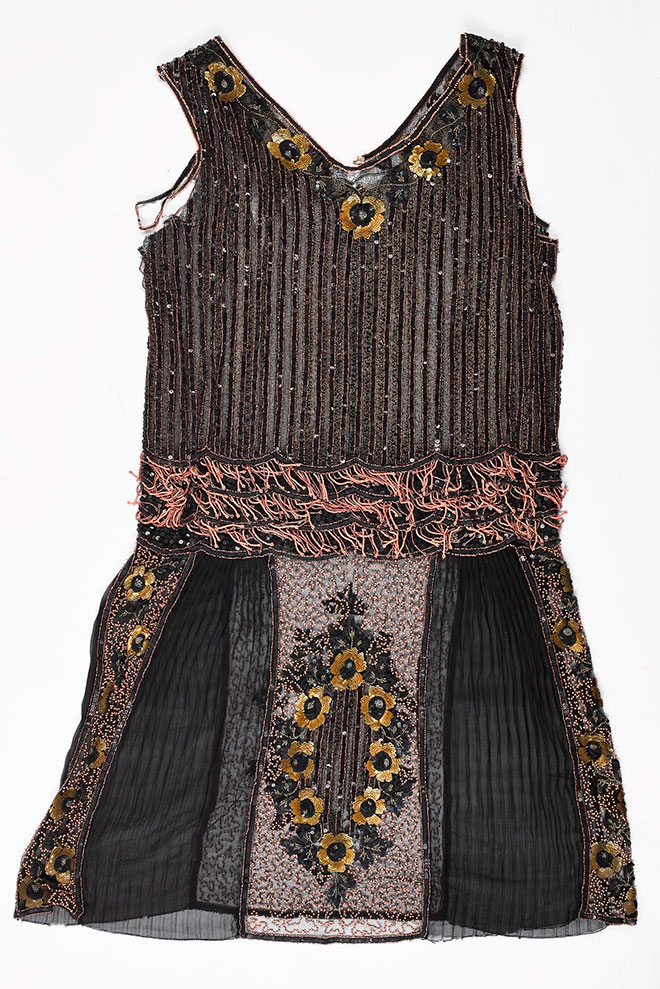
This very glamorous flapper dress from 1927 recalls the Great Gatsby era. It is constructed from sheer black silk net patterned with black and gold sequins, iridescent glass beads and coral-coloured beaded fringing; in the skirt section are four pleated black silk chiffon panels. Originally the dress would have been worn with an undergarment, most likely a silk slip in a light neutral tone.
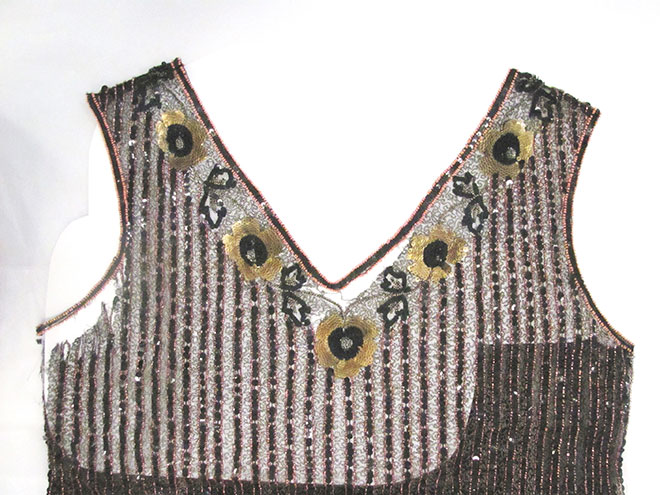
Sadly the dress was in a really fragile condition, with shattered and torn net at the underarms, front and back neck, and with some additional tears in the bodice and skirt. The weight of the decorative pattern had placed so much stress on the delicate fabric that tears had occurred in several areas. As the worst damage had occurred under the arms and across the centre front and centre back, flexural stress was also likely to have influenced the damage. In fact the dress was in such poor condition that it was very difficult to handle, move, and even examine.

As with all conservation treatments, the work starts with individual assessment of the object, and consideration of what methods should be used to stabilise the condition. In this case, the obvious priority of stabilising the damaged areas was matched by the consideration that once on display further similar damage could occur to other areas of the dress due to gravity alone.
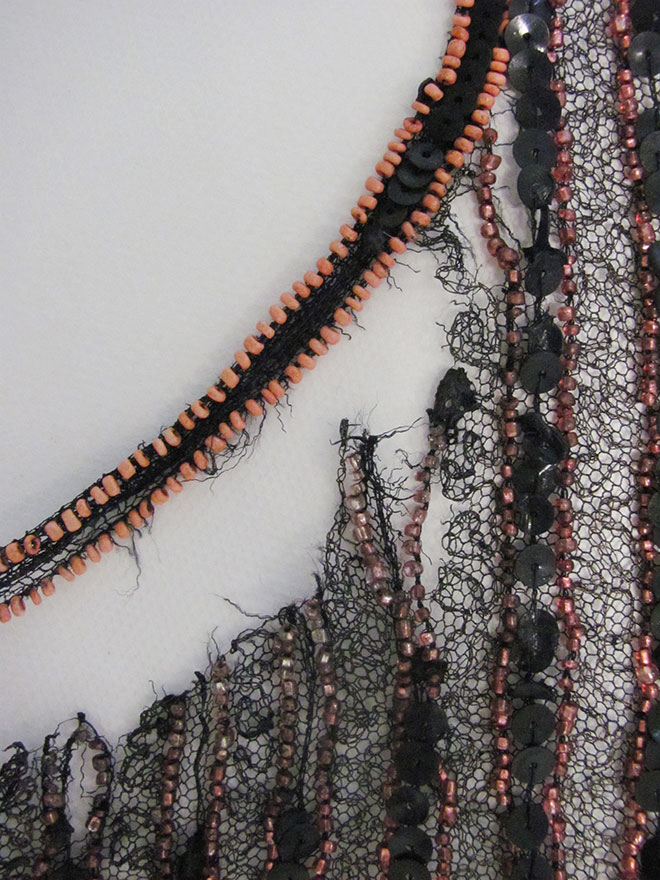
It was therefore important that the whole dress be given a fabric support that would be strong enough to take the weight of the beaded decoration, whilst remaining unobtrusive.
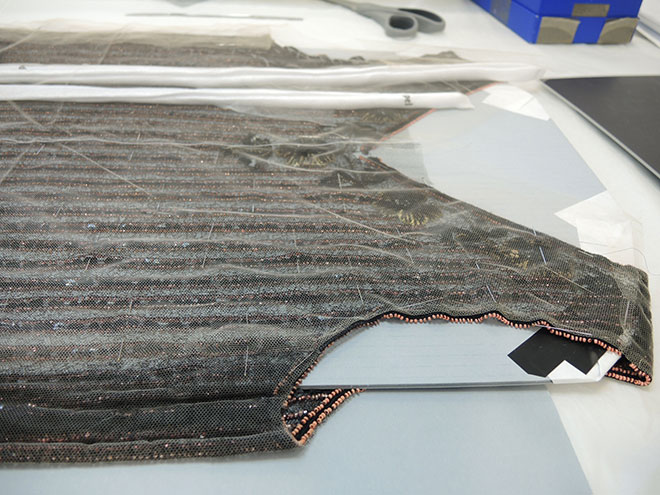
To do this, new nylon net was dyed to a neutral shade and pinned and tacked on to the reverse of the whole dress with temporary stitching. It was then stitched onto the dress from the front. The net was cut and finished on the inside by sealing the edges with a hot melt cutting tool, which helps eliminate bulk whilst neatening the raw fibres. For most of the dress, the stitches were worked through the eyes of the sequins in order to avoid placing further strain on the original black silk net. A two-ply black silk thread was used throughout.
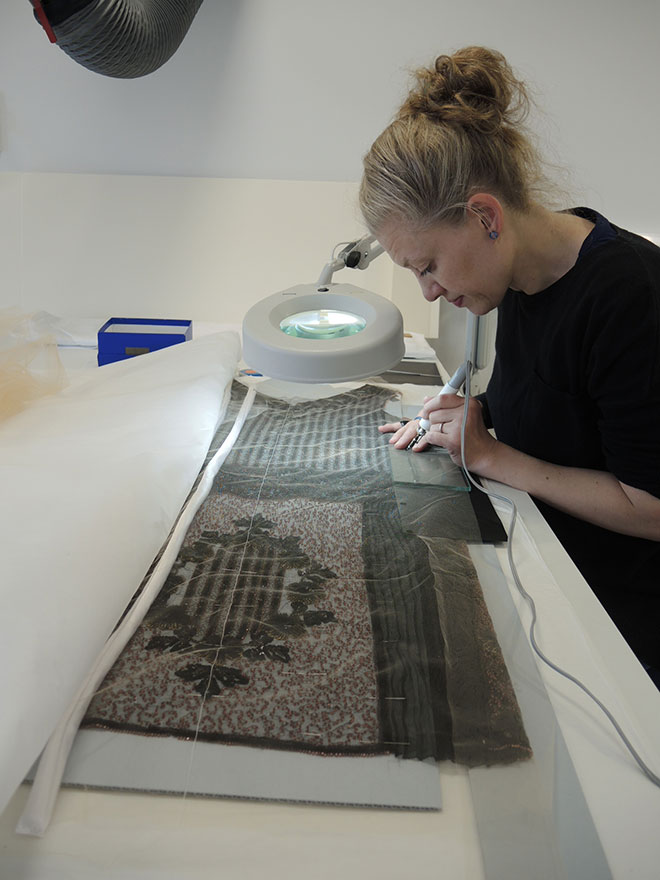
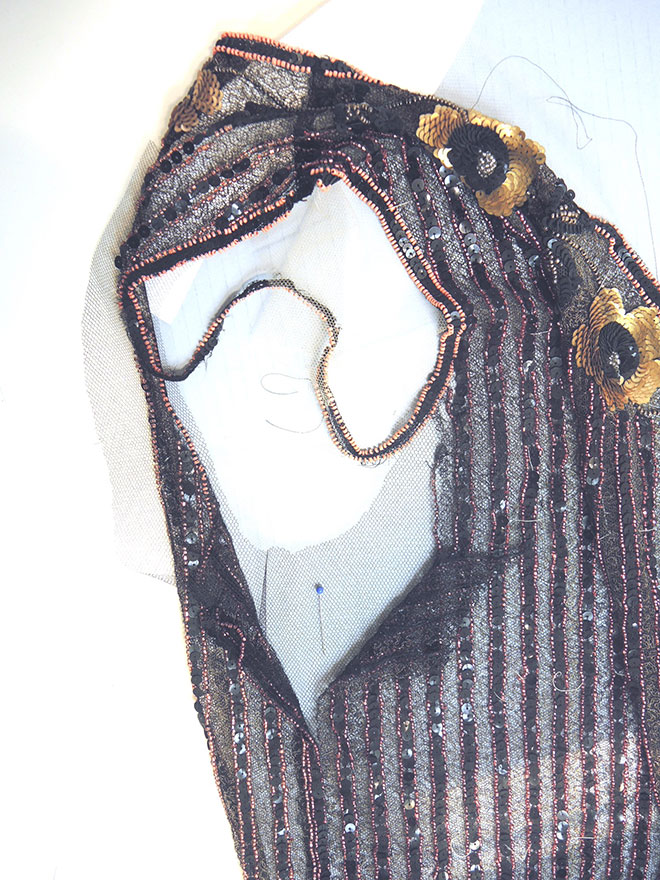
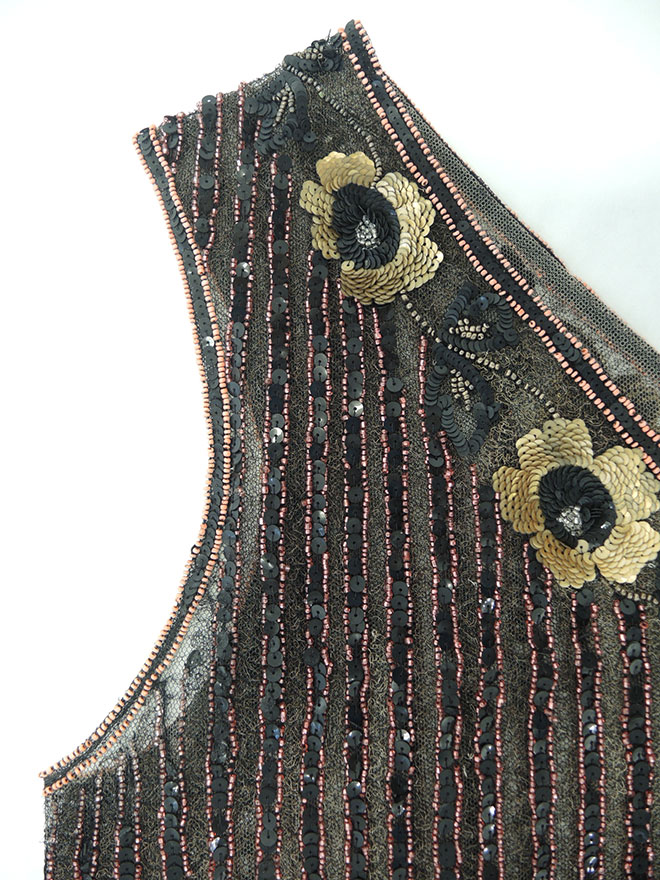
The worst areas of damage needed additional smaller patches to help support and blend in areas where the net and beading had been lost. These patches were of new black silk net, and were inserted in both underarms and the front and back neck.
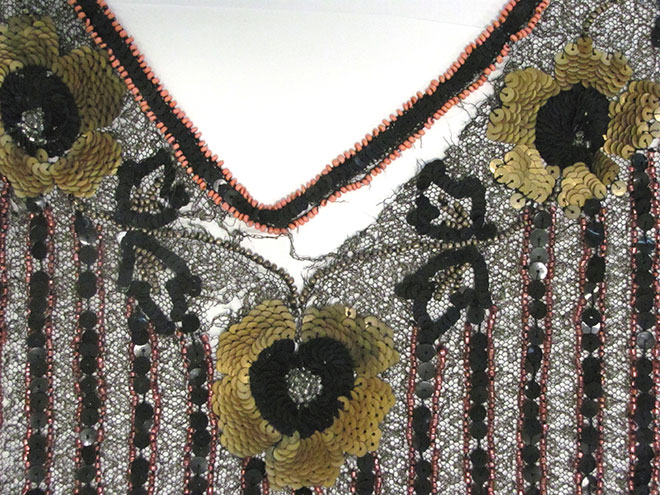
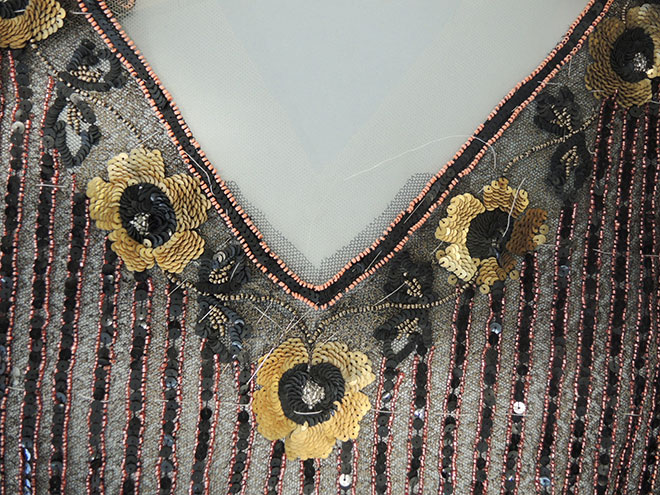
As can be seen from the in progress photographs, the net patches do not aim to restore the original appearance completely, but to provide support in a visually unobtrusive way.
Some 150 hours later, work on the dress was finally complete. However, when set against the condition of the object before treatment began, the time spent means the dress is not only suitable for display, but for examination in store if and when required.
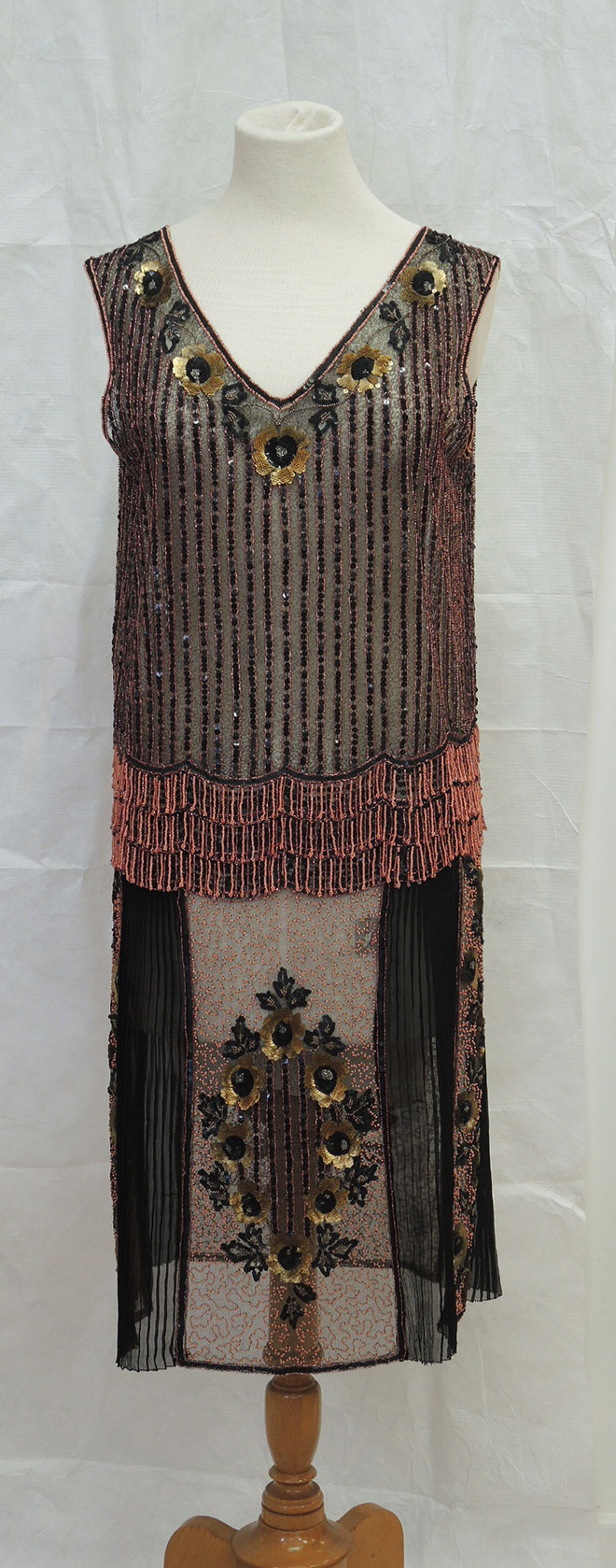
And in case of any doubt, the dress will be displayed complete with a suitable replica silk slip underneath – 1920s fashion embodied a certain risqué spirit, but modesty still prevailed for the majority of women!
